Someone asks you “What made you go down this route?” You stand there frozen… contemplating how to put your words together to reply. Internally questioning yourself, “why am I doing this?”
How do you explain yourself to an ideal client when there is no real reason or purposeful meaning behind what you do?
This is the exact reason why you need to know your purpose. Your business needs to stand on a solid foundation to allow it to have strength and meaning.
The goal is to get clear with yourself and why you do what you do first before starting your business and building connections. Plus, how would you set goals and know what to offer without knowing why?
Art therapists jump right into what they do and what they offer, and their features and modalities. Generating problems in communication with your ideal client, verbally, visually, and contextually. This leaves art therapists feeling devalued and misunderstood.
Don’t skip this step.
Everything has a purpose in this world and holds meaning.
Without your why this is what happens in your communication

Puts you in the manipulation mindset
You lead with what you do instead of why you do it causing friction with trying to connect with your ideal client. Immediately you begin to compete on price and sell through using fear as an anchor. This will not set you apart from other art therapists.

Lack of clarity The ideal client will feel you are not fully reaching them through your stories and messaging because ambiguity lingers within the context. This leads to confusion and misunderstandings about what you do, who you are, and what you offer, causing clients to look elsewhere for help because they desire an art therapist who is clear and concise with their words to build trust.
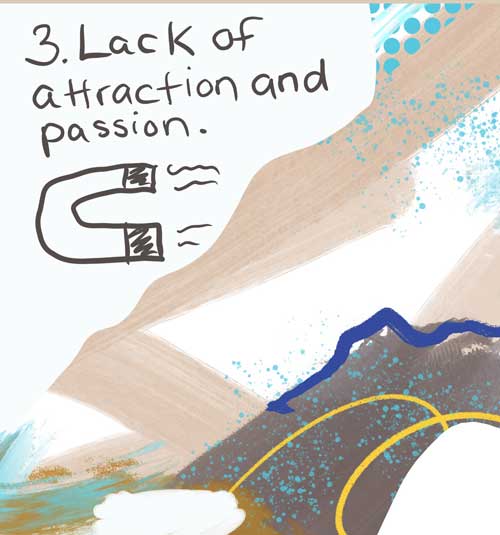
Lack of attraction and passion People are drawn to others who carry a purpose and are passionate about what they do and strive for. When no motives are defined in your art therapy business, there will be a lack of engagement in your work and building a community. The passion falls through, your energy deflates, and people will sense that and stir away. Add motivation to fuel yourself everyday to prevent burnout and feeling unsatisfied, unfulfilled, and devalued.
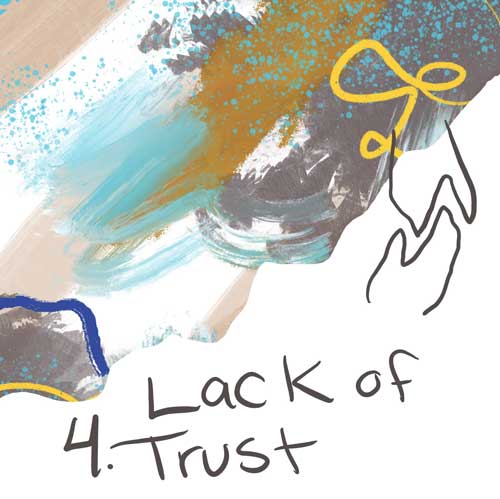
Lack of trust
People buy from those they trust, and your why helps to prioritize that. The why builds into your messaging through daily content and communication based on your strategy and foundation. Without building trust between you and your ideal client, they will struggle to believe and say yes to you. Your why takes you beyond making money to something that stems from feeling and empathy to create the know you, like you and trust you factor.
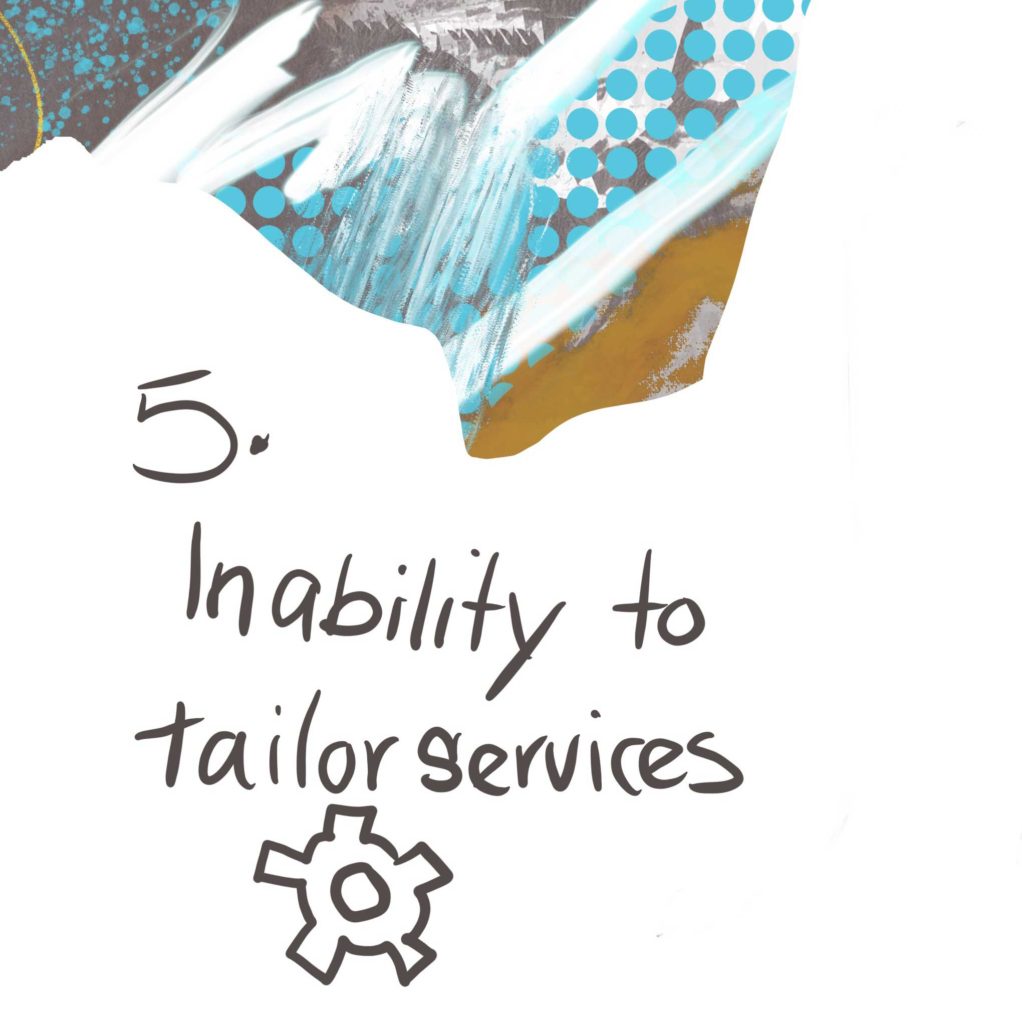
Inability to tailor services
Without knowing your why, it can be stressful to create offerings that meet your ideal clients needs. Causing problems with establishing long-term connections with your ideal client, who may feel that their needs are not being addressed.
Difficulty standing out
In the oversaturated mental health market, differentiating yourself from other art therapists without a clear why behind your brand only makes you disappear. Your ideal client may struggle to remember you and what makes you unique, leading them to choose other art therapists who are far more distinct.
Difficulty articulating values
People connect with others who share the same values. If not clearly communicated on a deeper level or paint the picture of the type of culture you bring. This can make it harder to keep your ideal client engaged in your brand and what you offer because their unsure of what you believe in and the environment you will build.
Missed connections
Without a clear “why” behind your art therapy business, you will miss opportunities to lead with emotion to connect with your ideal client who shares your values and beliefs. This can limit your ability to build strong and lasting emotional connections with your clients, which is essential for the long-term success of your business. Connection is currency to grow your business especially collaborating with other experts. Allowing you to create new and unique opportunities to go deeper into your ideal client psychographic needs.
Inconsistent messaging
If you’re not clear on why you started your art therapy business, it can be challenging to create consistent and coherent messaging because you are unsure of the type of language your ideal client uses or getting to know yourself and how you speak which can cause a huge disconnect. This can lead to confusion and inconsistencies that may harm your brand and reputation.
Lack of direction
Setting clear goals long-term and short-term will be overbearing. This can make it harder to create a roadmap for growth and lead to a lack of focus.
People do not buy what you do; they buy why you do it.
-Simon Sinek
Why does your “Why” matter?
Leading with your why and purpose creates impact and brings sustainability and longevity to your art therapy brand. This is called the inside-out approach, where you learn about your passions and motives and channel that through your business. It develops a solid foundation to stand on, and its concrete meaning that it will not collapse because of the strength your purpose brings.

It builds client loyalty
Your ideal client will feel comfortable with you after learning why you are here and what you are striving for. The client understands your motives and is supportive. They want to be in the movement and take the journey with you.
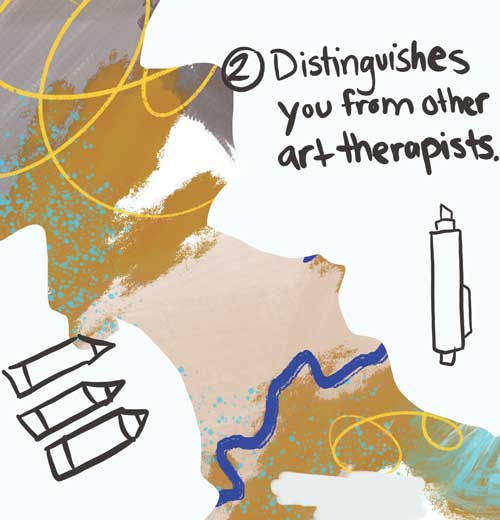
It distinguishes you from other art therapists
Each art therapist carries their own stories, experiences, thoughts, motives, and views on the world. Not everyone is the same in that matter. We each have a different perspective, and why not share that through your why statement and what you are here to do. Your ideal client will see that and believe in your goals.
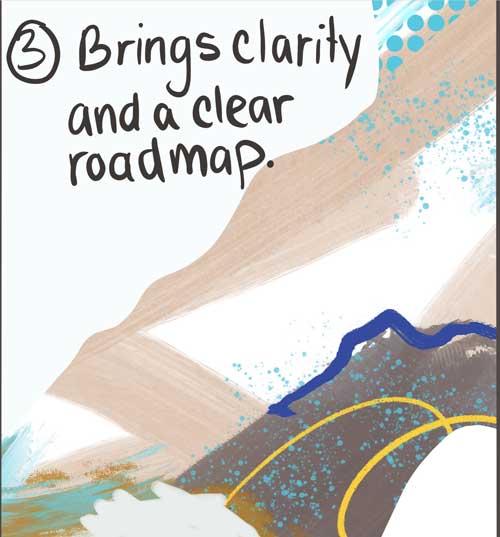
It brings you clarity and a clear roadmap
Starting a business is a huge step, its overwhelming and even more stressful when you do not know why you are doing this. This is what your why is here to do when defined, it will shut out the world around you and give you the path you are meant to go down. You feel at ease when setting up your goal posts because there visible and attainable.

Your communication is from the heart, its clear and filled with passion
You feel consistent in what to say, and there is energy in that communication which adds another layer. Through the passion people will begin to understand what you are here to do and who you help. There is no ambiguity in your language everything is streamlined from your heart and emotions.

Create valuable connections
Now with your why clearly defined and people knowing what you are here to do. You begin to create a relationship; based on what you believe in, what you support and what you value. Your ideal client will follow and connect if your beliefs and their beliefs align.
Higher growth rate
You will grow much faster when you lead with your why because you will notice that people remember you and what you bring to the table. You begin to be known for something; this is the key to growth to be known for something you are the best at.
Builds confidence and intuitiveness
This inside-out approach helps prioritizes getting to know yourself, what makes you happy, and what things your the best at. It stems from this so that your brand is built from your strengths allowing you to find that direction from a place of integrity. This strategy of defining your why first builds up your confidence, then your intuitive nature, allowing you to make decisions and setting goals efficiently.
The overarching factor of building a business is broken down into this formula:
Why – Why do I do it?
How – How do I do it?
What – What do I do?
From easiest to hardest:
What do you do?
This one is the easiest – Everyone knows what you do just by what you sell via products or services.
How do you do it?
This one is moderate – A few can answer how they stand out.
Why do I do it
This one is the hardest – Not many can clearly figure out the motives and drive behind their brand.
Let us see what comes to the surface for you!
Here are 5 quick ways to find your purpose.
Take out your journal and brainstorm on these questions below.
- What things in my market annoy me?
- What change did I want to bring to the world?
- Who do I want to help?
- What are my unique strengths?
- What do I want to change about my industry?
Works Cited
Sinek, Simon. “Part 1: A World That Doesn’t Start with Why.” Start With Why: How Great Leaders Inspire Everyone To Take Action, Penguin Group Inc., New York, USA, 2011, pp. 11–34.
Sinek, Simon. “Part 2: An Alternative Perspective.” Start With Why: How Great Leaders Inspire Everyone To Take Action, Penguin Group Inc., New York, USA, 2011, pp. 37–51.

Leave a Reply